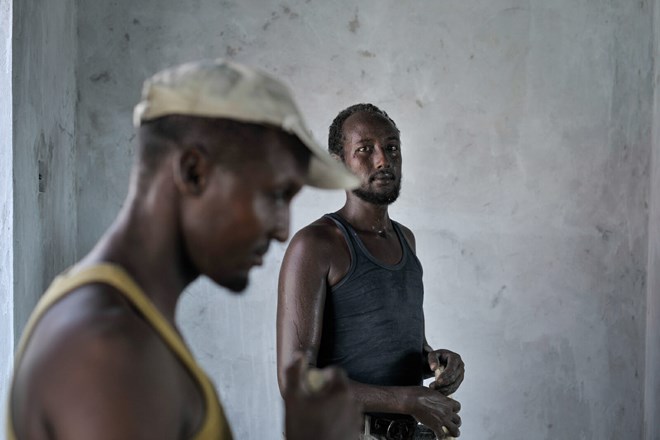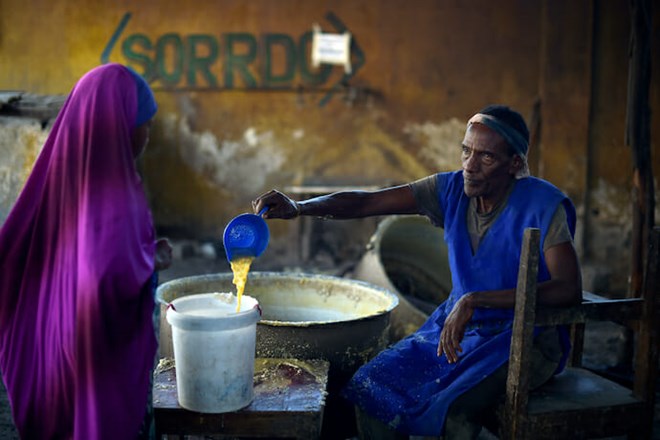
Monday July 6, 2020
By Mohammed Ibrahim Shire

Somalia celebrates its 60th Independence Day this year while the country continues on the path of fundamental recovery. In a quest to shed the stubborn label of a “failed state,” the once war-torn country has made significant strides towards rebuilding despite grappling with Al Shabaab and their grand attacks against civil society.
For decades, Somalia and its people have endured innumerable challenges. Internal and external interferences in one form or another have ravaged the country incessantly since the early 1990s. More recently, since 2011, the country has faced devastating cycles of deadly drought and mass displacement. However, despite these ongoing setbacks, some measurable progress is being made, albeit gradually. Although the country is wading in a sea of insurmountable obstacles, what drives this progress? Is it the perennial and celebrated Somali resiliency that is finally manifesting itself in a tangible form of progress? A change in Somalia’s leadership? Or, perhaps, are the advances of the state a result of a combination of both?
Somali culture embodies the hopes of a proud society even in the bleakest adversities. A Western aid worker stationed in Somalia in 1992, the plight of the civil war which was compounded by a calamitous drought that caused widespread famine, noted that despite the hardship and tragedy, Somalis kept repeating: “This is Somalia, I am Somali, this is my country.” The war created a visual standard for all of the images of famine; pictures of severely malnourished children with visible outlines of their ribs pushing against flesh-less skin, peering through sunken eyes; very long queues of emaciated people, squatting, waiting for the arrival of food aid. Amidst such a gloomy reality, the aid worker recalled how the desperately poor but proud Somalis expressed a dignified cry of “don’t disrespect me just because I’m begging for food and water, or because I’m ragged and my clothes are dirty.” That experience, as he later recalled, has left him both bewildered and filled with immense admiration of the resilience of the Somali people.
Indeed, Somalis have in the past demonstrated a streak of resilient determinations. You can find it in the Somali anti-colonial movement — the Dervish — who so effectively defied British, Italian, and Ethiopian authorities between 1900 and 1920 that it took a ruthless British aerial bombardment – the first bombardment in Africa — to destroy its formidable stronghold in Taleex. Adding to the list of instances of resilience was the movement of the Somali Youth League, the nation’s first political party and a key driver of independence, challenging UNESCO’s skepticism of the young country’s capability by venturing deep into Somalia’s countryside and raising the country’s literacy rate from 5 percent to a whopping 60 percent in 1974. Or, the outnumbered Somali regulars who briefly but valiantly held off an Ethiopian-Cuban-Soviet counter-attack in 1978 — a part of the Ogaden War for Ethiopia. This was a brave feat witnessed by one Cuban soldier who remarked that the Somalis were “ridiculously tough and fought bravely.” Most recently was the country’s suffering of Africa’s deadliest terror bombing in October 2017 and daring to rebuild the flattened site the next day.
The Somali populace has shown tremendous resilience while witnessing decades of misgovernance, dysfunction, and endemic corruption from governments that were meant to serve them. A hopeless situation that would typically forge a pessimistic society helped formulate enduring Somali resilience. This resistance ultimately birthed the parameters for progress alongside acceptable leadership brought into power by the strength and solidarity of society.
In the space of the three years since Africa’s most deadly bombing, the Mogadishu Bombings attributed to Al Shabaab, Somalia has made considerable progress and has reason to celebrate. On the political facet, the days of political bickering between the top leaders made a timely exit – for now. Relative political harmony signaled hope and political trust in the country’s leadership. Furthermore, whereas in the past external actors dealt directly with federal member states of Somalia, the Somali federal government has taken its rightful position as the gatekeeper of the country’s sovereignty. The presence of external actors has contributed to Somalia’s instability. With the domestication of governance, Somalia has a strong platform to rebuild upon. Transitioning to more internal governance invited a degree of foreign respect and political leverage, permitting Somalia to hone its foreign policy. Moreover, the resumption of dialogue between Somalia and the breakaway region of Somaliland has been lauded as a step in the right direction. Finally, the country edges closer to its first democratic election in half a century as it is trying to hold a one-person-one-vote election in 2021.

A man serves lentils to a young girl at a feeding centre in Mogadishu. (Tobin Jones)
In terms of national security, there has been steady, commendable progress in rebuilding the defunct security institutions by introducing reforms such as biometric registration of the security forces, superior training, and regular pay. Additionally, Al Shabaab’s operational capability has been severely damaged with their near daily-attacks being an occurrence of the past. The last attack by the organization occurred in 2019, after 17 months of inactivity. While it is too early to classify the organization as destroyed, they are evidently less active as multiple attacks were occurring per year since their inception in 2006, to the deadly Mogadishu Bombing of 2017.
Economically speaking, Somalia achieved a historic milestone in getting closer to irrevocably reducing its debt. The World Bank also anticipates a higher economic growth forecast for the next three-to-five years following 2.9 percent economic growth in 2019.
Culturally, Somalia has restored historic pre-civil war monuments and memorial, with the latest cultural installments being the refurbished national theatre and the iconic national stadium.
Amidst these palpable signs of progress, however, the path of reconstruction is long and unusually difficult. Somalia continues to be affected by the negative consequences of climate change and the lack of access to some of the most basic human rights, including water supply, health care, and universal education. Furthermore, the country is suffering from a growing youth population. Whilst such a youth bulge can constitute a demographic dividend in some countries, in Somalia, the unfavorable context renders it more problematic as there are not enough jobs for this swelling demographic. Finally, the Somali federal government is still facing challenges in upending the stagnating status-quo that a number of Somalia’s federal member states continue to exploit.
Despite challenges, hope and optimism are taking centre stage as it slowly replaces polarisation, acrimony, and fears of renewed violence.